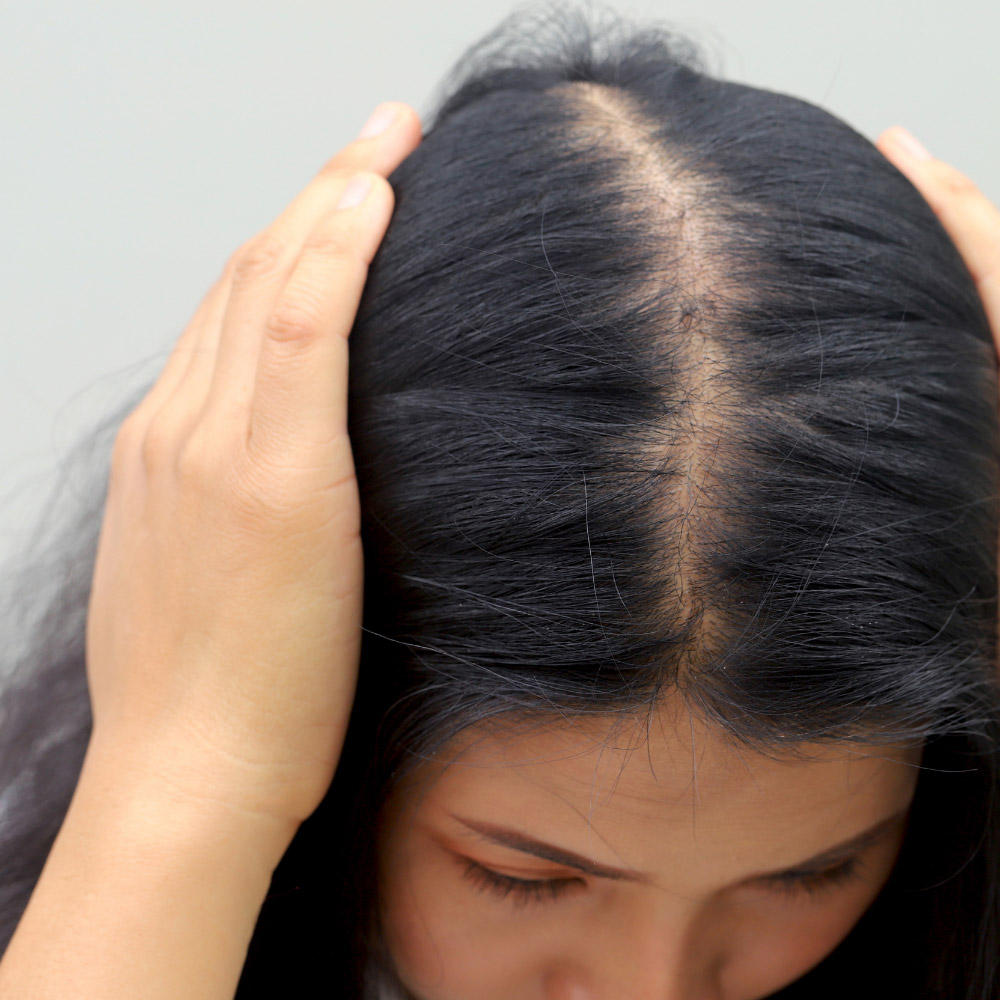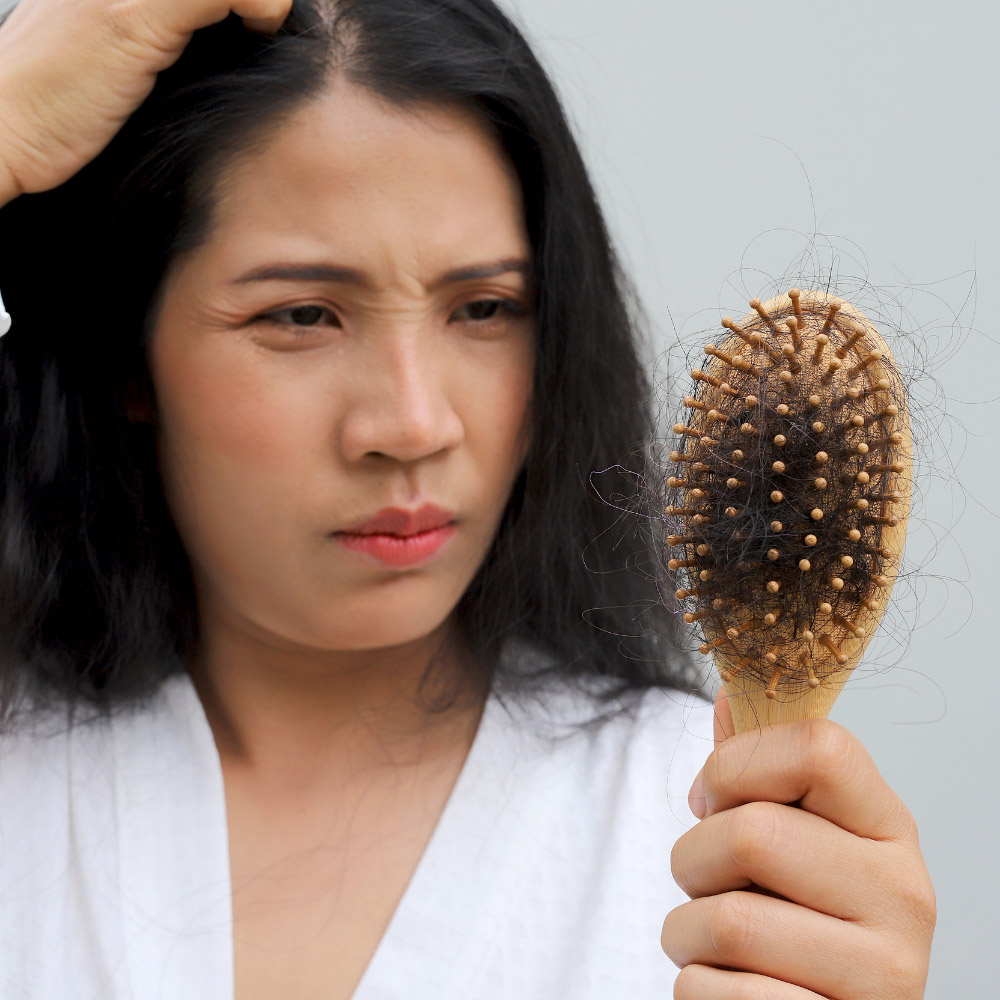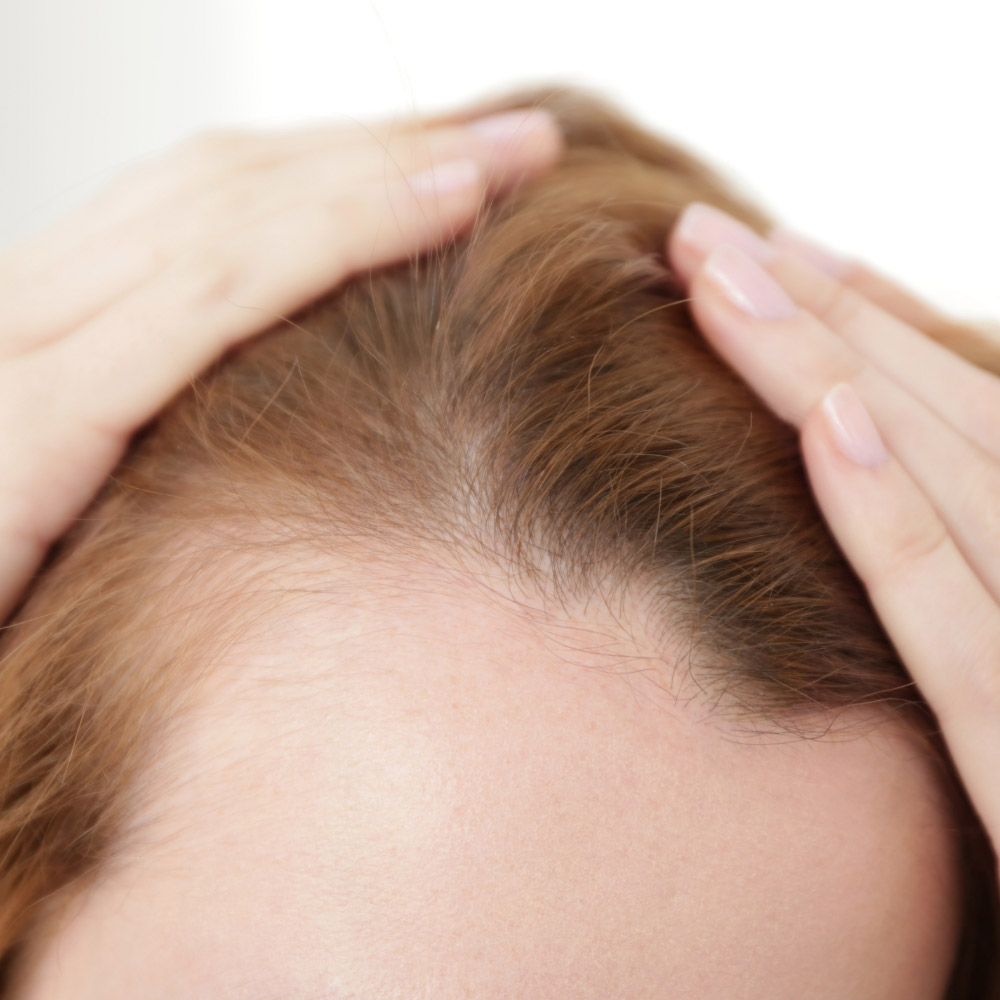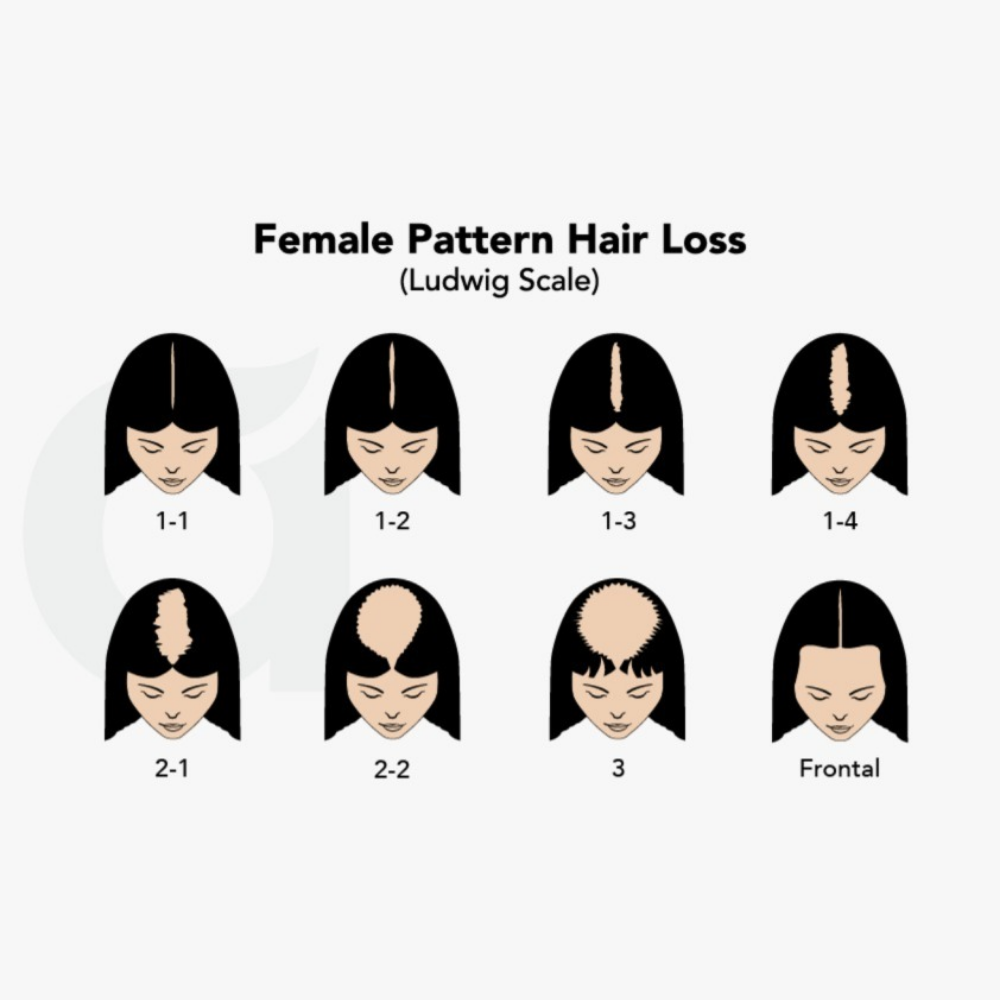Female Pattern Hair Loss
Female Pattern Hair Loss (FPHL), also known as Androgenetic Alopecia, is the most common type
of hair loss in women. While it can begin as early as puberty, it is most often noticed around
menopause, when hormonal changes tend to accelerate the process.
Unlike men, women usually do not experience complete baldness. Instead, hair loss presents as
diffuse thinning across the top and crown of the scalp, often accompanied by a widening of the
central hair part. The frontal hairline generally remains intact, aside from the minor recession that
naturally occurs with age. Over time, thinning may also extend to the temples and above the ears if
left untreated.
Female Pattern Hair Loss progresses more gradually than male
pattern baldness and is classified into three stages:
- Stage 1: Subtle, diffuse thinning that may go unnoticed.
- Stage 2: Noticeable reduction in hair density (50–70% loss), with visible scalp along the parting.
- Stage 3: Significant thinning across the crown and top of the scalp, with more pronounced baldness.
Although Female Pattern Hair Loss (FPHL) rarely results in total baldness, it can still have a profound impact on confidence,
self-image, and overall quality of life. Early diagnosis and timely treatment are essential to slow
progression and restore volume.




